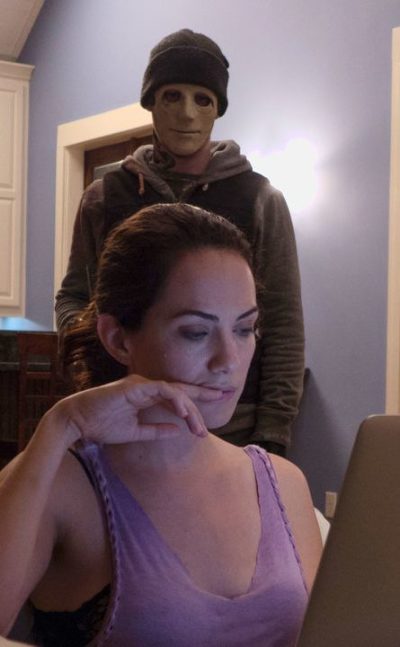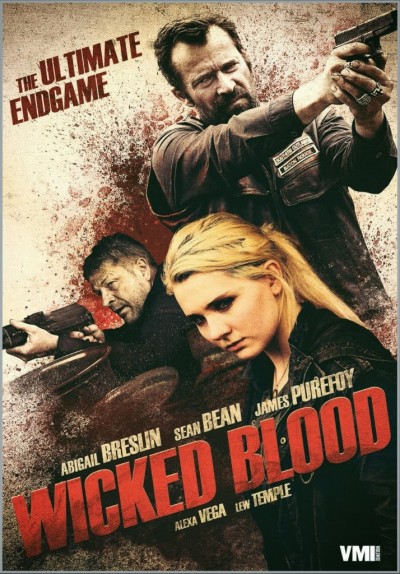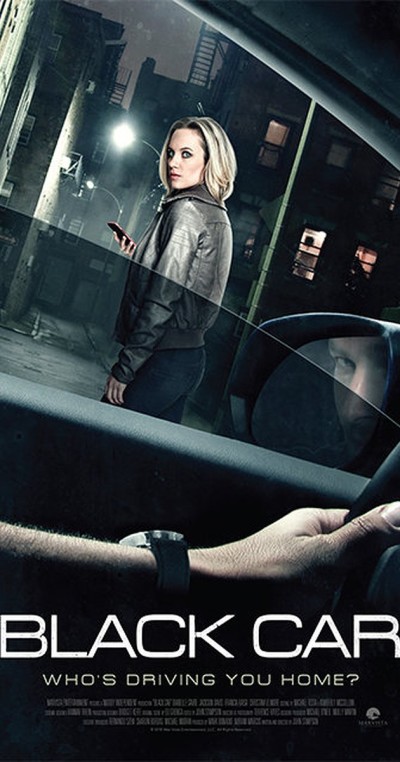★★
“Gratuitous violins.”
 Stacey and and Thom are on their way to a friend’s wedding, where she’ll also be providing the music, when their car breaks down. Stacey walks back to a garage they passed, but while she’s away. Thom is accidentally shot by father and (unwilling) son hunting duo, Weaver (Coughlan) and Rex (Smith). Realizing their victim was not alone, they wait for Stacey to return, so her presence as a loose end can be tidied up. But Rex’s reluctance to pull the trigger gives her a lifeline, and begins a game of cat-and-mouse through a remote, wooded area of the Derbyshire Peak District.
Stacey and and Thom are on their way to a friend’s wedding, where she’ll also be providing the music, when their car breaks down. Stacey walks back to a garage they passed, but while she’s away. Thom is accidentally shot by father and (unwilling) son hunting duo, Weaver (Coughlan) and Rex (Smith). Realizing their victim was not alone, they wait for Stacey to return, so her presence as a loose end can be tidied up. But Rex’s reluctance to pull the trigger gives her a lifeline, and begins a game of cat-and-mouse through a remote, wooded area of the Derbyshire Peak District.
I guess the aim is something like a British version of Deliverance, but the resources aren’t there – and neither are the performances, direction and script, none of which reach above workmanlike at best. The worst offender is the script, which frequently had me rolling my eyes at the stupidity of the characters, who frequently behaved in ways that made no sense in real-life, purely for cinematic purposes. Not the least of these is the way Stacey suddenly opts to start carrying her precious violin around with her for the final sequence, having not apparently given a damn about it before that point. You don’t have to be a seer to predict why this is needed.
The idea isn’t a bad one, and the cinematography is solid, with the locations used photogenic. However, the action is nothing short of awful, possessing absolutely no impact. While Crevel’s performance as Stacey is okay, she needs to be a much more pro-active heroine, trying to turn the tables on her attacker. Instead, she spends the first hour doing virtually nothing but running away, save for dropping a sign with a nail on it, hoping Weaver will stand on it. [Spoiler alert: inevitably, he does!] Coughlan does exude a nice, unhinged menace as the villain, and the script does attempt to give him both motivation and a back-story. Unfortunately, this isn’t conveyed organically, rather in large gobbets of monologue that tend to bring the film to a halt.
Clocking in at 75 minutes, including credits, is likely a wise decision given the paucity of the material present. It’s clear the budget here was limited – simply because how expensive can four people running around a forest be? Lawson deserves credit for not letting those resources be too obvious. On the other hand, money doesn’t excuse the apparent lack of effort put into a lazy script, apparently worked out on the back of a beer-mat one Friday lunch-time. The fact it had different titles while shooting (Rites of Passage), from its limited cinema run, then a third name for its DVD release, is perhaps another indication more forethought would have been helpful.
Dir: Steve Lawson
Star: Helen Crevel, Andrew Coughlan, Sam Smith, Jay Sutherland
a.k.a. Footsoldier














